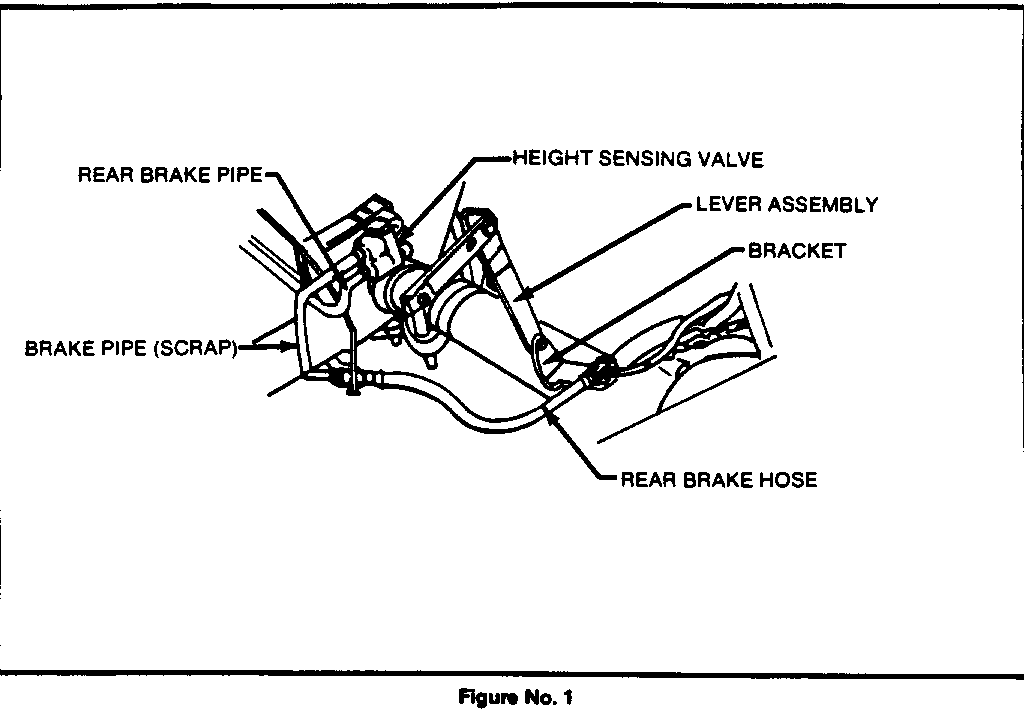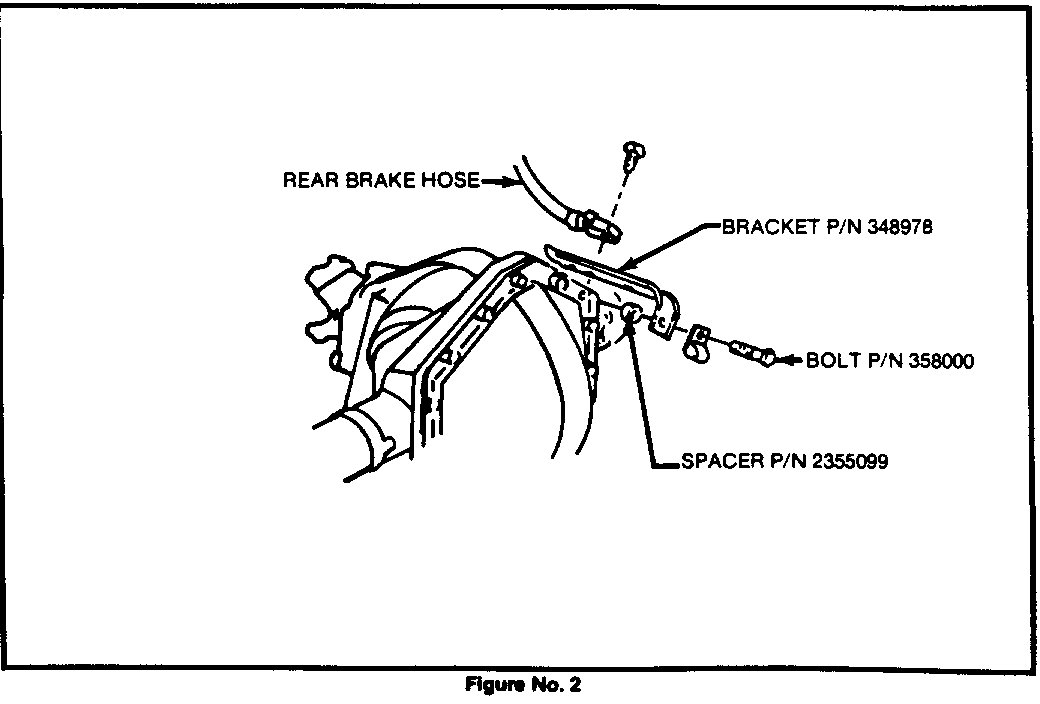REAR SUSPENSION/HEIGHT SENSING BRAKE SYSTEM

Models: 1984 and 1985 C/K 3500
This bulletin is a revision of Truck Service Bulletin 83-B-94, dated June, 1983, updating for model years 1984 and 1985.
1984-1985 C/K 3500 series trucks are equipped with a rear suspension height sensing device that optimizes the brake proportioning valve setting for the load the vehicle is carrying. The height sensing system "fine tunes" the brake balance in vehicles subjected to a range of loading conditions.
Occasionally, vehicle modifications by body builders or owners influence the height sensing device. If a vehicle has had rear suspension modifications that affect its trim height or the spring rate, and the driver complains about the brake modulation characteristics of the vehicle, it is recommended that the height sensing system be removed and the brake system be revised as described below.
1. Detach rear brake hose from lever and bracket assembly. Reference Figure No. 1.
2. Remove lever assembly and bracket from axle.
3. Install rear brake hose bracket (P/N 348978) and spacer (p/N 2355099) with a 3/8 16 X 1.38 bolt (P/N 358000 shorter bolt removed in Step No. 2) in the upper cover hole. Reference Figure No. 2. Use Loctite 75 or equivalent on the bolt threads.
4. Attach brake hose to bracket with bolt from original installation.
5. Install a 3/8 16 X 1 3/4 bolt (P/N 9439637 longer bolt removed in Step No. 2) through spacer P/N 14055556 (removed in Step No. 2) in remaining axle cover attaching hole. Use Loctite 75 on bolt threads or equivalent.
6. Disconnect brake pipes from height sensing valve and brake hose, and discard short brake pipe. Reference Figure No. 1.
7. Remove and discard height sensing valve, bracket and bolts.
8. Carefully reposition the rear brake pipe, and connect it to the rear brake hose.
9. Bleed and test brake system per Section 5 of the appropriate Light Duty Service Manual.


General Motors bulletins are intended for use by professional technicians, not a "do-it-yourselfer". They are written to inform those technicians of conditions that may occur on some vehicles, or to provide information that could assist in the proper service of a vehicle. Properly trained technicians have the equipment, tools, safety instructions and know-how to do a job properly and safely. If a condition is described, do not assume that the bulletin applies to your vehicle, or that your vehicle will have that condition. See a General Motors dealer servicing your brand of General Motors vehicle for information on whether your vehicle may benefit from the information.
